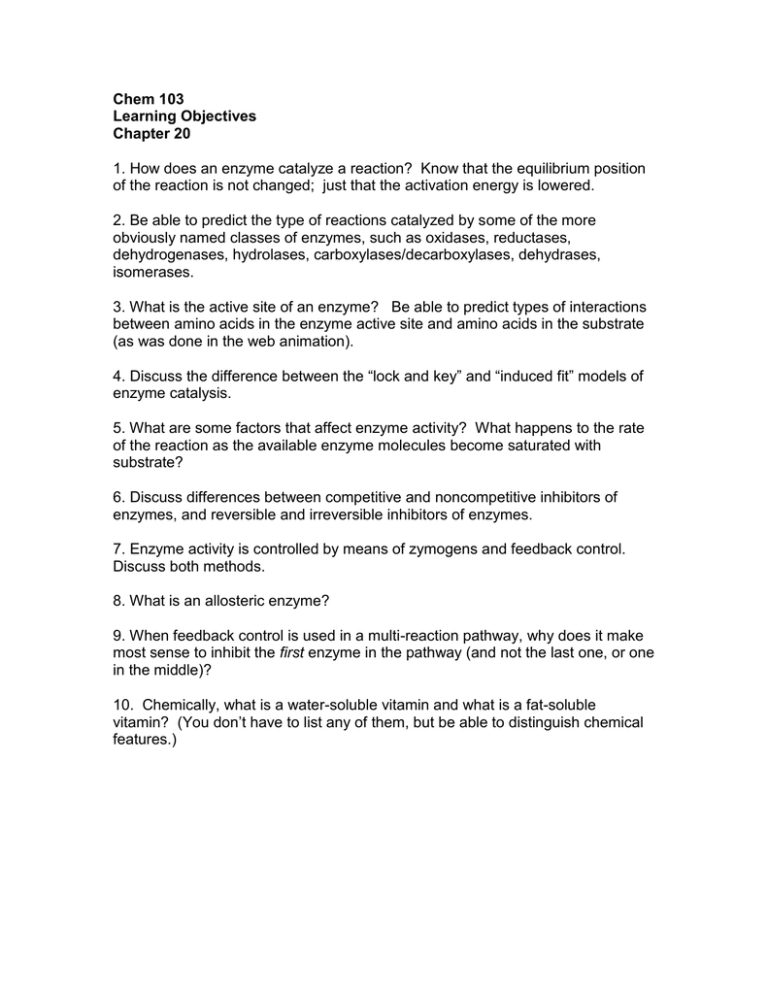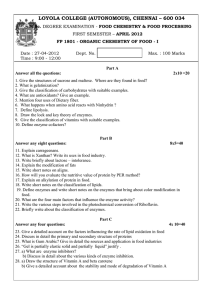Chem 103 Learning Objectives Chapter 20
advertisement

Chem 103 Learning Objectives Chapter 20 1. How does an enzyme catalyze a reaction? Know that the equilibrium position of the reaction is not changed; just that the activation energy is lowered. 2. Be able to predict the type of reactions catalyzed by some of the more obviously named classes of enzymes, such as oxidases, reductases, dehydrogenases, hydrolases, carboxylases/decarboxylases, dehydrases, isomerases. 3. What is the active site of an enzyme? Be able to predict types of interactions between amino acids in the enzyme active site and amino acids in the substrate (as was done in the web animation). 4. Discuss the difference between the “lock and key” and “induced fit” models of enzyme catalysis. 5. What are some factors that affect enzyme activity? What happens to the rate of the reaction as the available enzyme molecules become saturated with substrate? 6. Discuss differences between competitive and noncompetitive inhibitors of enzymes, and reversible and irreversible inhibitors of enzymes. 7. Enzyme activity is controlled by means of zymogens and feedback control. Discuss both methods. 8. What is an allosteric enzyme? 9. When feedback control is used in a multi-reaction pathway, why does it make most sense to inhibit the first enzyme in the pathway (and not the last one, or one in the middle)? 10. Chemically, what is a water-soluble vitamin and what is a fat-soluble vitamin? (You don’t have to list any of them, but be able to distinguish chemical features.)


